Fimming cannabis for bigger yields: When and how to FIM your plants
.jpg)
Want to boost your cannabis harvest without more plants? Fimming (short for “F*ck I Missed”) is a simple pruning trick that creates bushier plants with multiple new colas. Learn how it works, when to use it, and how it compares to topping. Read on to find out more about this revered training technique.
Want to get bigger cannabis yields without adding more plants or equipment? The answer might be fimming. This playful technique (short for “F*ck I Missed”) was discovered by accident when growers made an imprecise topping cut. Instead of harming the plant, the mistake encouraged it to develop several new growth tips, creating bushier canopies and unlocking the potential for higher yields.
In this guide, you'll learn exactly what fimming is and how it differs from other pruning and training techniques, such as topping. We'll also cover why and when to apply fimming to ensure plants grow vigorously without being set back. To help you succeed, you'll find straightforward, step-by-step instructions complete with recovery advice and aftercare tips to suit your grow space and goals.
What is fimming?
As mentioned, fimming originated as a happy accident when growers attempted to top their cannabis plants but didn't remove the entire tip. Rather than cutting through entirely, they left a significant portion of the new growth intact. This mistake triggered the plants to produce multiple new main colas, often more than the standard two generated by topping.
To understand how fimming compares with topping more clearly, here’s a quick comparison, including what plants can look like before and after fimming.
Topping vs fimming
.jpg)
- Number of new colas: Topping usually creates two main colas, while fimming can result in three or four (or even more) colas.
- Height control: Topping reduces overall plant height, making it useful for space-limited grows. Fimming does not limit height; the plant often continues growing upward.
- Stress and recovery: Because topping removes the entire growing tip, it can be more stressful for the plant. Fimming, removing around 75% of the top growth, tends to cause less stress and allows for faster recovery.
- Branch strength and growth pattern: Topped plants generally produce stronger, more predictable branches. Fimmed plants may grow erratically, sometimes producing weaker or more chaotic branch structures requiring additional support.
For a more in-depth read on how these two techniques differ in application and outcome, check out our guide on topping vs fimming.
Why FIM cannabis?
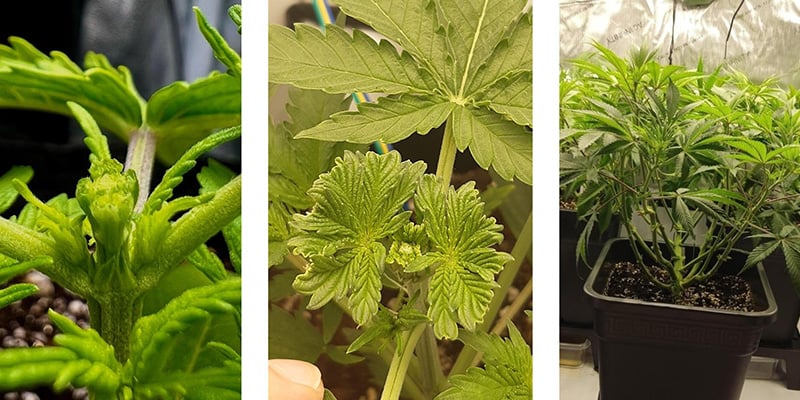
Growers choose to FIM cannabis because it balances yield-boosting potential with relatively low plant stress. By only partially removing the top growth, fimming encourages the plant to redirect energy into three or four new colas rather than just two. This leads to a bushier, more productive structure that can significantly improve light penetration across the canopy, helping lower branches develop into strong bud sites instead of being shaded out. This fuller structure makes limited-space grows more rewarding, especially for space-limited growers.
At the same time, fimming comes with certain limitations. Unlike topping, it does not reduce plant height, so tall, fast-growing strains may still stretch beyond control if vertical space is limited. In addition, how the plant responds to fimming can be somewhat unpredictable. While many branches thrive, some may grow weaker or require additional support to handle heavy buds later in the flowering stage.
In short, fimming is a valuable training method for increasing potential yields and creating bushier plants, but it’s not a one-size-fits-all solution. Growers should weigh the benefits against the drawbacks to decide if this technique fits their grow space and cultivation goals.
When to fim your plants
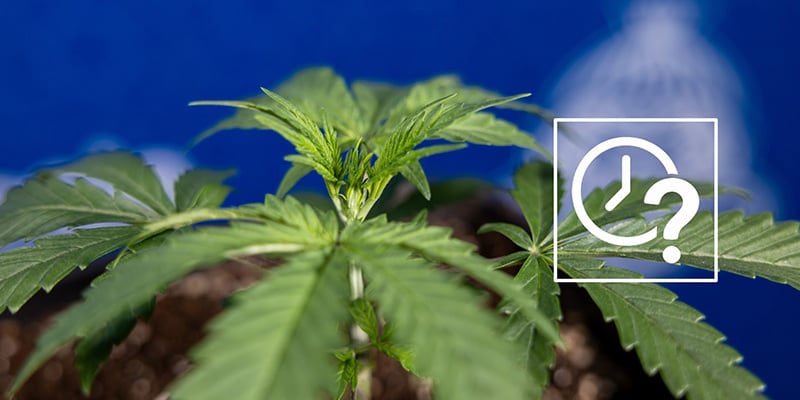
Timing is everything when it comes to fimming cannabis. This technique should only be performed during the vegetative stage, when plants are actively growing and able to recover quickly from stress. The sweet spot is usually when your cannabis has developed 3–5 nodes, enough to handle the cut, but not so many that energy is already locked into vertical growth.
Fimming is not recommended for autoflowering strains. Because autos have such a short vegetative stage, they don’t have enough time to recover and redirect energy after a stressful cut. Performing fimming on these plants can slow growth, reduce yield, and trigger early flowering before the plant fully matures. For autoflowers, low-stress training (LST) or gentle bending techniques are a safer, more effective way to boost yields without disrupting their life cycle.
Fimming during the flowering stage should always be avoided. Once buds begin forming, plants shift their energy from growth to reproduction, making them far more vulnerable to stress. Cutting at this stage can stunt development and reduce yields instead of boosting them.
Signs your plant is ready for fimming
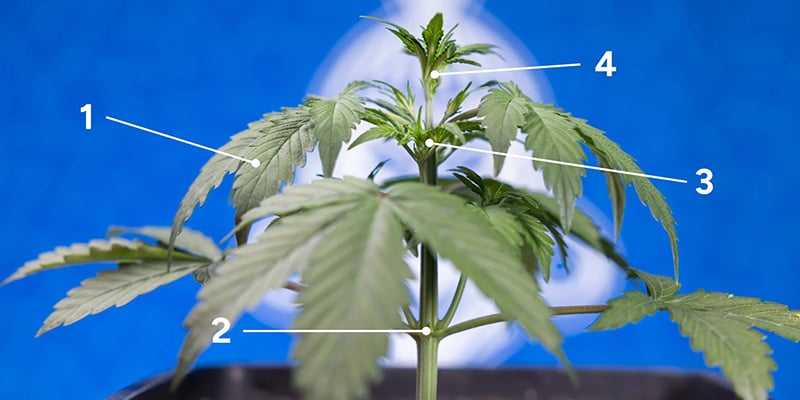
- Healthy, vibrant green leaves with no signs of deficiency or disease.
- Sturdy main stem with at least 3–5 nodes visible.
- Active vertical growth with new shoots forming regularly.
- No signs of pre-flowering pistils or bud formation.
Growers often wonder, “How long does it take a plant to recover from fimming?”. Recovery typically takes 3–7 days, depending on the strain and growing conditions. During this period, it's important to maintain optimal light, nutrients, and water to support the plant's healing process.
For more advanced growers, fimming can be combined with other methods like low-stress training (LST) or screen of green (ScrOG) to further shape the canopy. You can learn more about how these techniques interact in our guide to HST and LST techniques.
Step-by-step: How to FIM cannabis
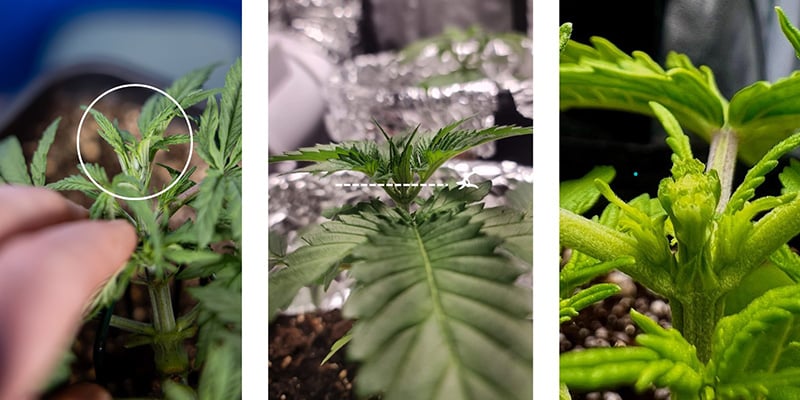
Although fimming is a relatively straightforward technique, it's essential to prepare correctly and follow each step carefully to minimize stress and reduce the risk of infection. Here's how to do it.
1. Preparation
- Wash your hands and put on clean gardening gloves.
- Sterilize your scissors or pruning shears before use. Some growers prefer to simply pinch the top growth with their fingers, but using sharp, clean tools ensures greater precision and plant safety.
2. Identify the growth tip
- Locate the very top of the plant where new leaves are emerging.
- You should see a tight cluster of fresh growth above the uppermost node. This is where you'll make your cut.
3. Make the cut (or pinch)
- Remove around three-quarters of the top shoot, leaving about one-quarter intact.
- This partial cut interrupts apical dominance, encouraging the plant to split energy into multiple new colas instead of one or two.
- Pinch vs snip: Pinching with your fingers is quick and simple, but it is less precise and more likely to crush plant tissue. Snipping with scissors provides a clean cut, reducing stress and lowering infection risk.
4. Immediate aftercare
- Avoid feeding or stressing the plant immediately after fimming. Let it rest for a few days.
- Maintain stable light, temperature, and humidity levels to support recovery.
- Check daily for signs of stress or slowed growth. Most plants bounce back within 3–7 days.
5. Ongoing training
- After new growth has recovered, consider combining fimming with low-stress training (LST) to spread branches and increase light exposure.
- Monitor how branches develop. Some may need tying down or supporting as they thicken.
With careful execution, this process results in a bushier plant structure with multiple new bud sites, setting the stage for bigger yields without adding extra plants.
Fimming vs topping vs other methods
Cannabis growers have a variety of training techniques at their disposal, each with unique benefits and drawbacks. Fimming sits somewhere between topping and other methods like low-stress training and screen of green. To help you choose the right approach for your plant, here's how they compare.
Fimming
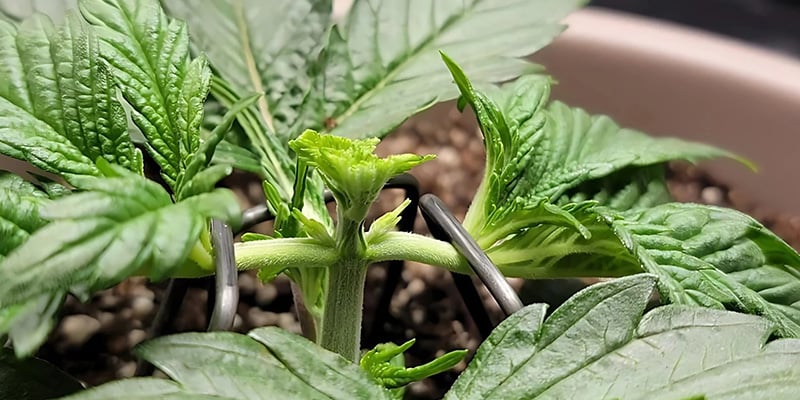
- Creates 3–4+ new colas by partially removing the top growth.
- Best for growers who want bushier plants and bigger yields without drastically slowing growth.
- Works well for micro-growers or those with limited plants who want maximum productivity.
Topping
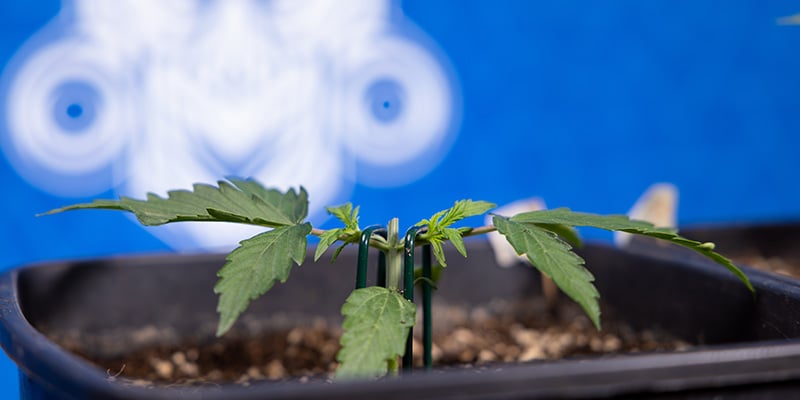
- Produces two strong main colas by fully removing the top growth tip.
- Reduces vertical height, making it ideal for small tents or grow boxes where space is limited.
- More predictable branch structure than fimming, but slightly more stressful on the plant.
Low-stress training (LST)
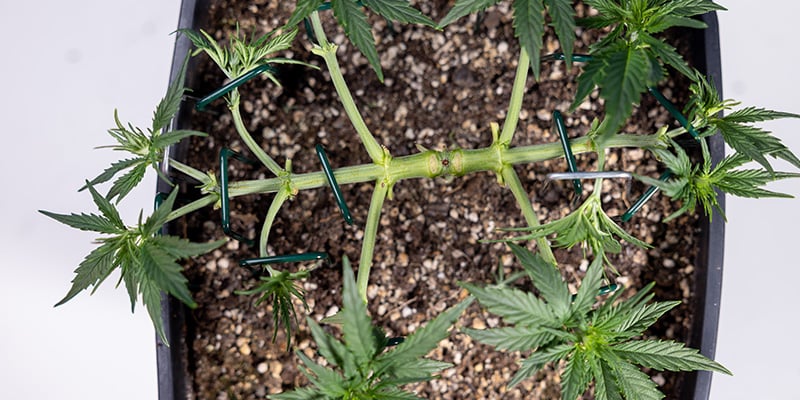
- Involves gently bending and tying down branches to improve light penetration and canopy shape.
- Can be combined with fimming or topping to maximize bud sites.
- Great for stealth grow ops and spaces where controlling plant shape is more important than just boosting yield.
Screen of green (ScrOG)
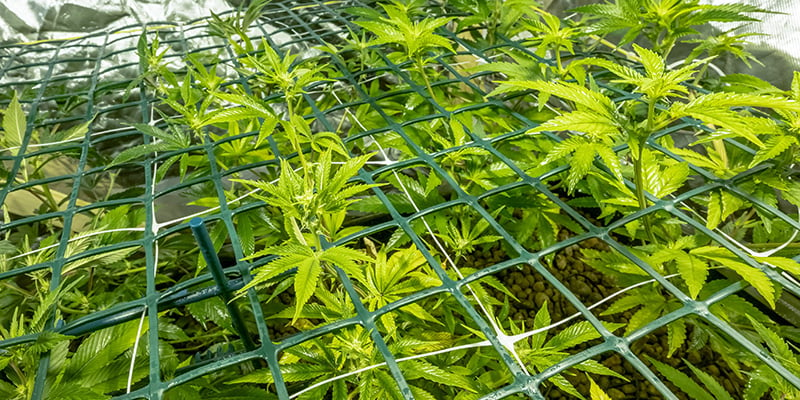
- Uses a horizontal screen to spread branches evenly, ensuring all bud sites receive equal light.
- Often paired with topping or LST for maximum efficiency.
- Demands time and attention but delivers excellent results in a limited space.
Choosing the right method
- Use fimming when you want to increase cola numbers without stalling growth.
- Choose topping when controlling height is your priority.
- Add LST if you want to shape plants with minimal stress.
- Opt for ScrOG if you're aiming for maximum yield in a compact grow space.
If vertical control is especially important, you may also want to read our guide on how to grow short and compact plants, which offers complementary strategies for space-efficient growing.
Is fimming the best pruning method for cannabis?
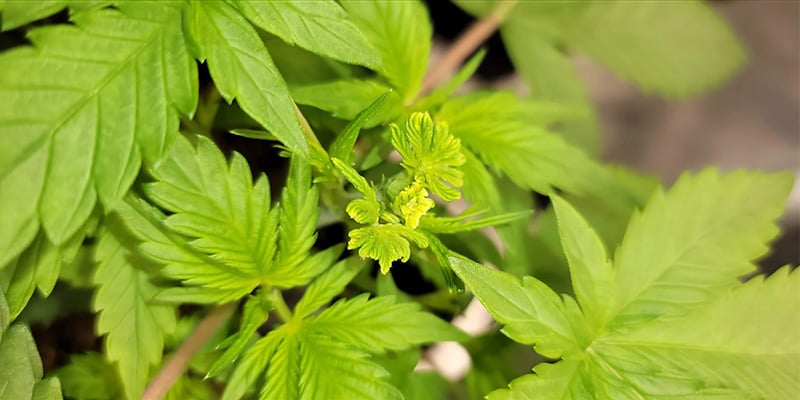
Fimming is a clever way to get more out of each plant, turning a simple “mistake” into a method that can boost yields and create bushier canopies. By removing around three-quarters of the top growth, growers can encourage multiple new colas, improve light distribution, and make the most of a small grow space. Unlike topping, however, fimming does not reduce plant height, and its unpredictable growth patterns sometimes lead to weaker branches that need extra support.
In short, fimming is best seen as one tool among many. For some growers, especially micro-growers who want maximum bud sites per plant, it can be the perfect technique. For others, topping or combining fimming with low-stress training or a screen of green setup may offer more reliable results. Each method has its place, and experimenting with different approaches will help you discover what works best in your space.
If you'd like to expand your skills, check out our full grow-guide series, including in-depth resources on all kinds of training, growing, and other pruning methods designed to maximize yield. And don't forget, having the right seeds and equipment makes all the difference. Explore our Seed Shop and grow gear collection to set yourself (and your plants) up for success.





 United States
United States










